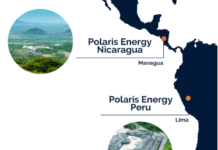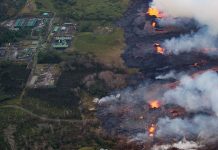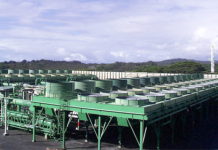Charles Morand
In October 2007, Tom wrote an excellent overview of the geothermal power sector. By way of recap, geothermal power produces electricity by using steam from naturally-occurring Earth heat that travels up from the planet`s mantle and core by conduction. Conventional geothermal harnesses hot water and fluids already present in the rock while enhanced geothermal systems (ESG) – or next-gen geothermal – works by injecting cold water into hot dry rock (HDR) and pumping out resultant hot water and steam.
In terms of business risks, geothermal stands at the confluence of mining and utility/independent power production. Extensive testing and drilling must initially be conducted to determine resource availability and quality. If sufficient resource potential can be ascertained, it is often just a matter of negotiating a power purchase agreement with a utility and connecting to the grid (the latter can be a real challenge!)
Geothermal’s excellent capacity factors, ranging from the mid-80s to the high 90s, qualify it for both baseload and peak (dispatchable) generation, thus making it the most valuable type of power there is. Unlike gas-fired generation, which accounts for the bulk of peak power today, geothermal power prices are not exposed to volatile energy commodities, although construction costs are impacted by the price of steel, cement, etc.
In the 2008 edition of Geothermal Today, the DoE’s EERE estimated that conventional geothermal electricity costs, before any reductions related to resource credits, between $0.63/kWh and $0.102/kWh to produce. Using crude (WTI), natural gas and retail electricity data from the EIA, I created the graph below to put this into perspective. The graph’s geothermal cost band is static and does not reflect actual cost evolution overtime – if it did it would probably be sloping downward with perhaps a lump in 2007/2008 when the prices of construction commodities peaked.

As mentioned by Tom in his original article, risks in the geothermal industry are heavily concentrated in the resource assessment and exploration phases, although the largest component of total development cost is facility construction. According to the investment bankers who underwrote a large chunk of the financing for the North American geothermal pure-plays, each hole drilled while looking for geothermal resources costs around $5 million, which is a fair chunk of change for companies with market caps of under $100 million (see table below).
EERE breaks down development costs for a “typical geothermal power plant” – which account for the bulk of geothermal power’s levelized cost – as follows:
| Development Stage | Cost ($/kW) | Percent Total |
| Exploration and resource assessment | 400 | 10% |
| Well field drilling and development | 1,000 | 25% |
| Power plant, surface facilities, and transmission | 2,000 | 50% |
| Other development costs (fees, working capital, and contingency) | 600 | 15% |
| Total | 4,000 | 100% |
Although geothermal’s high capacity factors and inherent predictability give it a clear edge over wind and solar PV, economical geothermal development is currently constrained to a handful of areas with the right geological conditions. This led Tom to call conventional geothermal “boutique” clean power, meaning it can never account for an appreciable proportion of total power production (although in certain regions it can definitely be scaled up substantially.)
The following table lists out the main geothermal stocks available to North American investors. Besides Ormat, the mother of all geothermal stocks and a mature and profitable company, the rest are development-stage companies that have taken a solid beating along with the rest of the alt energy sector over the past year.
Needless to say, the current financing environment is not favorable to either the mining exploration business model or the project development by inexperienced teams business model. This has resulted in more expensive capital for geothermal firms – Nevada Geothermal got a loan last September with an interest rate of 14% plus other fees, a punishing cost for any company.
| Name | Ticker | US$ Price (May 29) |
Market Cap (US$M) | TTM EPS (US$) | TTM PE | LTM Share Price Performance (%) |
| Nevada Geothermal | NGLPF.OB | 0.56 | 52.6 | (0.07) | N/A | (40.8) |
| Polaris Geothermal | PGTHF.PK | 0.59 | 44.8 | (0.07) | N/A | (48.8) |
| Raser Technologies | RZ | 3.93 | 257.4 | (0.79) | N/A | (60.6) |
| US Geothermal | HTM | 1.35 | 90.6 | (0.09) | N/A | (52.5) |
| Western Geopower | WGPWF.PK | 0.23 | 52.4 | NMF | N/A | (43.2) |
| Sierra Geothermal | SRAGF.PK | 0.19 | 13.6 | (0.04) | N/A | (68.3) |
| Ormat Technologies | ORA | 39.89 | 1,809.2 | 1.21 | ~33x | (21.6) |
| Average market cap | 331.51 | |||||
| Average market cap w/o Ormat | 120.42 | |||||
| Average LTM share price performance | (47.9) | |||||
| Average LTM share price performance w/o Ormat | (52.3) | |||||
New ARRA Money For Geothermal
What led me to want to write about geothermal – arguably one of the alt energy categories that has been the least discussed recently – was the announcement last Wednesday of funds for geothermal under the American Recovery and Reinvestment Act.
In fact, the pool of money announced was for both geothermal and solar, although geothermal caught my attention because I am working on a couple of geothermal mandates at the moment. Geothermal got $350 million, broken down as follows:
- Demonstration projects ($140 million): This will go toward geothermal in unconventional settings, including: “geothermal energy production from oil and natural gas fields, geopressured fields, and low to moderate temperature geothermal resources.” The first two areas are of special interest to me. I did a bit of work on what is called “geopressured geothermal”, or the type of geothermal resource typically found in and around oil & gas (O&G) operations. This resource generally comes in the form of hot, methane-saturated brine that flows to the surface under its own pressure. The methane can be separated from the brine and used in power production along with the geothermal resource in a hybrid plant. Currently, the O&G industry considers this more of a nuisance than an asset, but things could change. The Gulf Coast area is estimated to have substantial geopressured geothermal potential, and the DOE even ran a pilot project in Texas in the late 80s. Although the pilot ran fine, it was estimated that this resource was not economical at the time due to low energy prices. We know now where that argument stands and how short-sighted it can be. There are no public companies that I know of that are currently active in geopressured geothermal development, but this is an area to watch closely in my opinion.
- Enhanced geothermal systems technology R&D ($80 million): As discussed above, EGS is the next frontier in geothermal development. Because they allow for geothermal electricity production in HDR, EGS considerably expand the geographical scope of economical geothermal development; in fact, EGS could allow for geothermal electricity production in nearly every region. A 2006 MIT study concluded that, with investments in technology development of between $800 million to $1 billion over a 15 year period, EGS could be improved to allow for the economical construction of 100,000 MWe of capacity over a 50 year period in the US. This initial money takes us 8% to 10% there, and there have already been investments by the private sector (see the Google video at the end of this post.) Should these expenditure levels be maintained in the next four years, EGS would receive a
strong boost. - Innovative exploration techniques ($100 million): This is described as: “Funding [that] will support projects that include exploration, siting, drilling, and characterization of a series of exploration wells utilizing innovative exploration techniques.” Unlike #1 and #2, this should benefit the whole of the industry. As mentioned above and in Tom’s article, drilling represents the apex of risk for geothermal investors and significant improvements here could remove a major barrier to further geothermal development.
- National geothermal data system, resource assessment, and classification system ($30 million): This is described as follows: “To fully leverage new low-temperature, geopressured, co-production, and EGS technologies, DOE will support a nationwide assessment of geothermal resources, working through the USGS and other partners. Second, DOE will support the development of a nationwide data system to make resource data available to academia, researchers, and the private sector. Finally, DOE will support the development of a geothermal resource classification system for use in determining site potential.” In my view, this will be beneficial mostly to the unconventional geothermal players such as EGS and geopressured.
Conclusion
There unfortunately is not a whole lot of near and medium term actionable material for public equity investors in the ARRA geothermal package presented by the administration. The financing environment will most likely continue to be difficult for early-stage geothermal companies, and lower prices for natural gas probably aren’t helping its case. The immiment arrival of carbon trading in America could, however, provide tailwinds.
The package does, however, give a significant boost to unconventional geothermal resources that had traditionally gotten little attention outside of energy geek circles. If maintained, this financial commitment could substantially shorten the time line for these resources to play a notable role in our energy mix. Opportunities for public equity investors could thus arise before long.
A Vid On EGS With Steven Chu (now US Secretary of Energy)
DISCLOSURE: None







